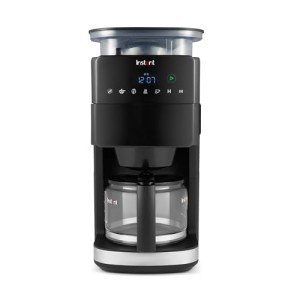Bean To Cup Espresso Coffee Machine: The Ultimate Guide
In current years, the coffee culture has experienced a significant transformation, with the increase of home brewing gadgets offering benefit and quality comparable to café offerings. Amongst these gadgets, the Bean to Cup Espresso Coffee Machine stands apart as a preferred among coffee connoisseurs and casual drinkers alike. This extensive guide explores what these machines are, how they work, the benefits they use, and factors to consider when picking the right one.
What is a Bean to Cup Espresso Coffee Machine?
A Bean to Cup Espresso Coffee Machine is a sophisticated coffee brewing device that grinds coffee beans fresh for each cup, automating the whole espresso-making procedure. These machines usually include built-in grinders, incorporated milk frothers, and precise developing innovation, allowing users to develop premium espressos, lattes, coffees, and more, all from the convenience of their homes. The benefit, matched with the abundant and robust tastes produced, has actually made these machines significantly popular.
How Does It Work?
The basic operation of a Bean to Cup Espresso Coffee Machine can be broken down into numerous essential steps:
Bean Grinding
- The machine grinds whole coffee beans right away before brewing, guaranteeing optimum freshness and taste retention.
Brewing
- Ground coffee is packed into a filter, and warm water is required through the coffee grounds at high pressure, which is essential for developing espresso.
Frothing (Optional)
- Many models consist of a steam wand or milk frother for preparing frothed milk for lattes and cappuccinos.
Serving
- The final stage includes giving the brewed coffee into a cup, frequently with programmable features for customization.
Advantages of Bean to Cup Espresso Machines
Purchasing a Bean to Cup Espresso Coffee Machine offers numerous benefits, adding to its growing appeal.
| Benefit | Description |
|---|---|
| Convenience | One-touch operation lessens the time and effort needed to prepare coffee. |
| Quality | Newly ground beans result in a richer, more delicious drink compared to pre-ground options. |
| Modification | Users can change settings to suit personal choices, including grind size, coffee strength, and milk froth levels. |
| Cost-efficient | Although the preliminary financial investment might be high, cost savings on coffee buy from cafés can be substantial over time. |
| Adaptability | The ability to brew different coffee types, from espresso to cappuccino, expands the machine's appeal. |
Secret Features to Look For
When choosing a Bean to Cup Espresso Coffee Machine, numerous functions can affect the purchase choice. Below are necessary aspects to think about:
Grinder Type
- Burr mills are preferred over blade mills for their constant grind size.
Brewing Pressure
- Search for machines that offer a minimum of 15 bars of pressure for optimum espresso extraction.
Milk Frother
- Select in between manual steam wands or automatic milk frothers based on preferences for milk texture and foam.
User Interface
- An user-friendly control panel with programmable settings boosts the total experience.
Size and Design
- Consider the countertop area offered and choose a design that matches your kitchen area visual appeals.
Maintenance Options
- Some machines provide automatic cleaning cycles, which can conserve effort and time in maintenance.
Popular Bean to Cup Espresso Machines
Picking a machine that fits one's requirements can be challenging. Below is click the following page of popular models, known for their dependability and performance.
| Design | Key Features | Rate Range |
|---|---|---|
| De'Longhi Magnifica ESAM3300 | Adjustable coffee strength, compact design | ₤ 550 - ₤ 700 |
| Breville Barista Touch | Touchscreen controls, integrated conical burr mill | ₤ 800 - ₤ 1,150 |
| Saeco PicoBaristo | Automatic milk frother, 12 coffee specialties | ₤ 900 - ₤ 1,300 |
| Jura E8 | Pulse Extraction Process, Alexa Compatible | ₤ 1,800 - ₤ 2,500 |
| Gaggia Anima | Easy to clean, programmable settings | ₤ 500 - ₤ 800 |
Upkeep Tips
Keeping a Bean to Cup Espresso Coffee Machine in excellent condition is necessary for guaranteeing longevity and optimum performance. Here are some upkeep pointers:
- Regular Cleaning: Clean the machine's parts frequently, consisting of the drip tray, coffee premises container, and water reservoir.
- Descaling: Perform descaling every couple of months based on water solidity and usage to avoid mineral buildup.
- Modification Water Filter: If the machine has a water purification system, alter the filter as suggested.
- Check Seals and Gaskets: Check for wear and tear to avoid leakages and ensure appropriate pressure throughout developing.
Frequently asked questions
1. Are Bean to Cup Espresso Machines simple to use?Yes, many models are developed for user convenience with easy control panels and one-touch operation. 2. Can I use pre-ground coffee in these machines?While some machines permit for using pre-ground coffee, the primary benefit lies in using whole beans for fresh grinding. 3. How typically should I clean my Bean to Cup machine?Regular upkeep is crucial; daily cleansing of detachable parts and descaling every 2-3 months are typically suggested. 4. What is the average
life-span of a Bean to Cup Espresso Coffee Machine?With proper upkeep, these machines can last anywhere from 5 to 15 years based on usage quality
. 5. Are these machines worth the investment?Though they can be expensive, the convenience, quality coffee production, and long-term savings make them a deserving investment for lots of coffee enthusiasts. Buying a Bean to Cup
Espresso Coffee Machine can substantially boost the home
coffee experience. By offering freshly brewed, high-quality coffee, these machines cater to the growing demand for café-style beverages in the comfort of one's kitchen. With numerous options on the marketplace, understanding features and personal choices will assist in choosing the best machine to fit any coffee fan's needs.

